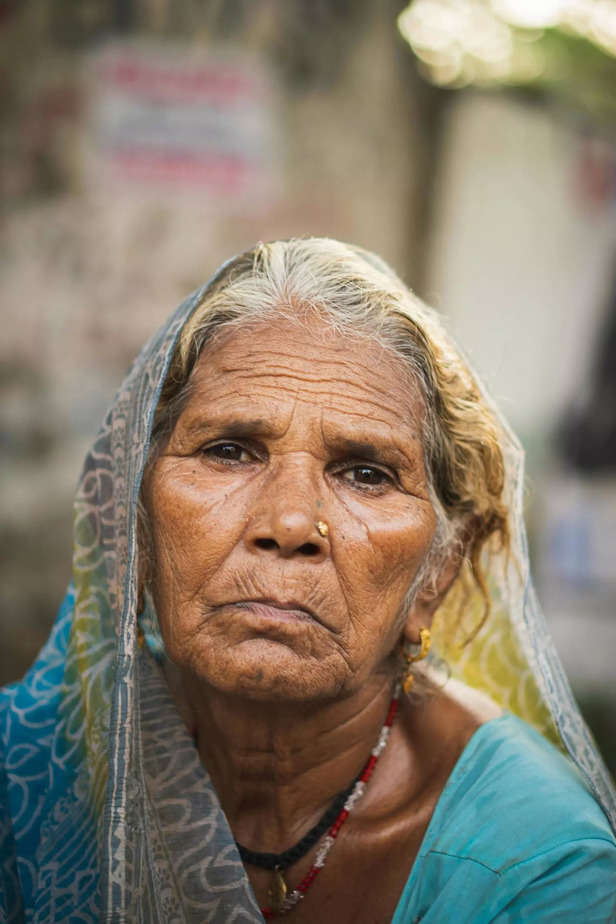Torn Between Two Worlds: The Hidden Identity Crisis of Brown Skin Youth
Ankita Rai | Tue, 15 Apr 2025
Caught between cultures, languages, and expectations, individuals with Brown skin often face identity crises that go unspoken. This article explores the emotional weight of cultural identity struggles, the complexity of mixed race identity issues, and the South Asian identity crisis experienced by many in the diaspora. It's time to talk about what it means to not feel “Brown enough” in a world obsessed with boxes we were never meant to fit in.

( Image credit : Pixabay )
Photo:
There’s a quiet identity crisis simmering beneath the surface of countless lives—one that rarely makes it into mainstream conversations. It doesn't come with dramatic headlines or clear definitions. But it lives in the eyes of people with Brown skin, in their pause before answering “Where are you from?” and in the weight of choosing between cultures like a wardrobe of borrowed clothes. This is the identity no one quite knows how to claim. It’s not just about race or nationality. It’s about belonging—and how hard it is to feel at home when your very existence sits between categories.
The Unnamed Burden of In-Between

To be Brown—especially in Western societies—is to live between the lines. Not white enough to blend in. Not Black enough to be part of the dominant racial dialogue. And if you’re South Asian, Middle Eastern, Latinx, or of mixed heritage, the story becomes even messier. You're not just carrying a passport. You're carrying centuries of history, colonization, migration, and silence. The result? Cultural identity struggles that don’t always show on the outside, but quietly shape every interaction. You become a chameleon—shifting tones, accents, behaviors depending on the room you walk into. And eventually, the question creeps in: Who am I when no one’s watching?

Brown skin is often seen, but rarely understood. It becomes a symbol—of exoticism, of danger, of intellect, of “otherness.” But what it doesn’t get to be is complex. Society expects Brown people to fit neat roles, often ones rooted in outdated stereotypes or incomplete assumptions. Meanwhile, within our own communities, colorism adds another layer. Those with lighter Brown skin are praised, while darker shades are still subjected to microaggressions and subtle exclusions. So even before the outside world categorizes you, you’re already dealing with internal pressure to conform, to lighten, to blend. It’s not just a social issue—it’s personal. A South Asian identity crisis doesn’t always look like rebellion. Sometimes, it looks like silence. Sometimes, it looks like hiding parts of yourself just to feel safe, even in your own skin.

For those with mixed race identities, the struggle can be even more fragmented. When your heritage is split between worlds, it’s easy to feel like you're not enough of either. You may have one foot in your ancestral culture and another in the country you were raised in, yet never fully belong to either. You’re asked to explain your identity. To justify it. To “pick a side.” But identity doesn't work that way. It's not binary. It’s fluid, evolving, deeply personal—and it often refuses to fit into the boxes that people try to place you in.
Mixed race identity issues are rarely discussed, yet they’re profoundly felt. It’s hard to embrace your heritage when you’re constantly being told you’re not doing it right. Whether it's your accent, your clothes, your food, or your rituals—there’s always someone ready to tell you you’re getting it wrong.

Here’s the uncomfortable truth: the idea of a singular “Brown identity” is convenient, but unrealistic. Brownness isn’t a monolith. It includes people from vastly different geographies, languages, religions, and histories. Yet in racial discourse, all of that gets flattened into a single word—Brown. But you can’t fit millions of lives into one label. What it means to be Brown in New Delhi is different from what it means in Dubai, in London, in Toronto, in Queens. And when we pretend otherwise, we erase the very individuality that makes our stories worth telling. Too often, we try to prove we’re “Brown enough”—through language fluency, cultural knowledge, even suffering. But the need to prove itself is part of the problem. The deeper issue isn’t our failure to fit the identity. It’s that the identity doesn’t have space for all of us.

So, what’s the way forward? It starts with recognizing that identity crises are not signs of weakness—they’re signs of awareness. They mean we’re paying attention. We’re wrestling with contradictions that deserve more than simplistic answers. Being Brown doesn’t require fluency in your mother tongue, or perfect festival attire, or encyclopedic knowledge of your ancestry. Your identity is valid, even if it’s messy. Even if it's hybrid. Even if it’s still unfolding. You don’t need permission to belong. You just need space—to exist, to question, to celebrate, to grieve, to grow.
And maybe the real question isn't “Am I Brown enough?” but rather: Who told me I wasn’t?
Unlock insightful tips and inspiration on personal growth, productivity, and well-being. Stay motivated and updated with the latest at My Life XP.
The Unnamed Burden of In-Between

brown woman
( Image credit : Pixabay )
To be Brown—especially in Western societies—is to live between the lines. Not white enough to blend in. Not Black enough to be part of the dominant racial dialogue. And if you’re South Asian, Middle Eastern, Latinx, or of mixed heritage, the story becomes even messier. You're not just carrying a passport. You're carrying centuries of history, colonization, migration, and silence. The result? Cultural identity struggles that don’t always show on the outside, but quietly shape every interaction. You become a chameleon—shifting tones, accents, behaviors depending on the room you walk into. And eventually, the question creeps in: Who am I when no one’s watching?
Brown Skin: Seen But Not Always Understood

woman
( Image credit : Pixabay )
Brown skin is often seen, but rarely understood. It becomes a symbol—of exoticism, of danger, of intellect, of “otherness.” But what it doesn’t get to be is complex. Society expects Brown people to fit neat roles, often ones rooted in outdated stereotypes or incomplete assumptions. Meanwhile, within our own communities, colorism adds another layer. Those with lighter Brown skin are praised, while darker shades are still subjected to microaggressions and subtle exclusions. So even before the outside world categorizes you, you’re already dealing with internal pressure to conform, to lighten, to blend. It’s not just a social issue—it’s personal. A South Asian identity crisis doesn’t always look like rebellion. Sometimes, it looks like silence. Sometimes, it looks like hiding parts of yourself just to feel safe, even in your own skin.
Growing Up Mixed and Misunderstood

years of being divided between two worlds
( Image credit : Pixabay )
For those with mixed race identities, the struggle can be even more fragmented. When your heritage is split between worlds, it’s easy to feel like you're not enough of either. You may have one foot in your ancestral culture and another in the country you were raised in, yet never fully belong to either. You’re asked to explain your identity. To justify it. To “pick a side.” But identity doesn't work that way. It's not binary. It’s fluid, evolving, deeply personal—and it often refuses to fit into the boxes that people try to place you in.
Mixed race identity issues are rarely discussed, yet they’re profoundly felt. It’s hard to embrace your heritage when you’re constantly being told you’re not doing it right. Whether it's your accent, your clothes, your food, or your rituals—there’s always someone ready to tell you you’re getting it wrong.
Why the “Brown” Box Isn’t One Size Fits All

brown skin tone
( Image credit : Pixabay )
Here’s the uncomfortable truth: the idea of a singular “Brown identity” is convenient, but unrealistic. Brownness isn’t a monolith. It includes people from vastly different geographies, languages, religions, and histories. Yet in racial discourse, all of that gets flattened into a single word—Brown. But you can’t fit millions of lives into one label. What it means to be Brown in New Delhi is different from what it means in Dubai, in London, in Toronto, in Queens. And when we pretend otherwise, we erase the very individuality that makes our stories worth telling. Too often, we try to prove we’re “Brown enough”—through language fluency, cultural knowledge, even suffering. But the need to prove itself is part of the problem. The deeper issue isn’t our failure to fit the identity. It’s that the identity doesn’t have space for all of us.
Redefining What It Means to Belong

brown woman
( Image credit : Pixabay )
So, what’s the way forward? It starts with recognizing that identity crises are not signs of weakness—they’re signs of awareness. They mean we’re paying attention. We’re wrestling with contradictions that deserve more than simplistic answers. Being Brown doesn’t require fluency in your mother tongue, or perfect festival attire, or encyclopedic knowledge of your ancestry. Your identity is valid, even if it’s messy. Even if it's hybrid. Even if it’s still unfolding. You don’t need permission to belong. You just need space—to exist, to question, to celebrate, to grieve, to grow.
And maybe the real question isn't “Am I Brown enough?” but rather: Who told me I wasn’t?
Unlock insightful tips and inspiration on personal growth, productivity, and well-being. Stay motivated and updated with the latest at My Life XP.
Frequently Asked Questions (FAQs)
- What does Erikson's concept of an identity crisis refer to?
Erikson's identity crisis refers to a period of inner conflict during which a person questions their sense of self and place in the world. - Does identity crisis happen to everyone?
While not everyone experiences a full-blown identity crisis, most people face some level of self-identity questioning at various life stages. - Who was the first person to talk about the identity crisis?
The term "identity crisis" was first introduced by psychoanalyst Erik Erikson in the mid-20th century.










